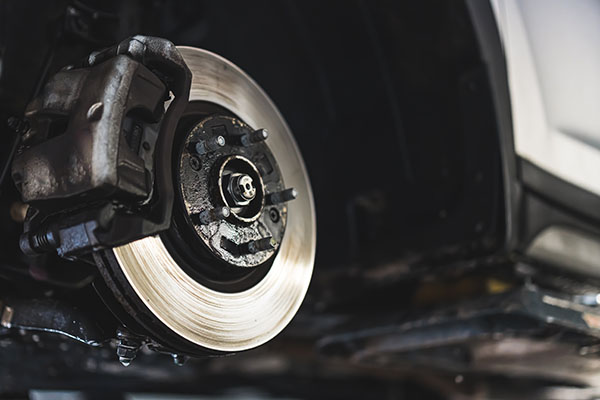
Your vehicle's braking system is one of its most critical safety components. Proper maintenance of the braking system ensures optimal performance, responsiveness, and, most importantly, safety on the road. But how can you maintain all of the parts that make it up? Well, continue reading to find out - here is a breakdown of every components service needs:
1. Brake Pads
Brake pads are the primary components responsible for creating friction and slowing down your vehicle when you press the brake pedal. Regularly inspect your brake pads for wear. Most brake pads have wear indicators - small metal tabs that produce a squealing noise when the pads need replacement. Replace worn brake pads promptly to prevent damage to other braking components.
2. Brake Rotors (Discs)
The brake rotors, or discs, are the flat, shiny surfaces that the brake pads press against to create friction and slow down the vehicle. Inspect the rotors for signs of warping, scoring, or excessive wear. If you notice grooves, heat spots, or vibrations while braking, it may be time to replace or resurface the rotors to maintain smooth braking performance.
3. Brake Calipers
The brake calipers house the brake pads and are responsible for pressing them against the rotors. Inspect the calipers for leaks, cracks, or sticking pistons. Properly functioning calipers are essential for even and consistent braking.
4. Brake Fluid
A brake fluid is a hydraulic fluid that transfers the force from the brake pedal to the brake components. Regularly check the brake fluid level and ensure it is within the manufacturer's recommended range. Contaminated or old brake fluid can compromise braking performance and lead to system failure. Consider flushing and replacing the brake fluid every 2-3 years or as recommended in your vehicle's maintenance schedule.
5. Brake Lines and Hoses
Inspect the brake lines and hoses for any signs of cracks, leaks, or damage. Damaged brake lines can lead to brake fluid leaks, reducing brake pressure and responsiveness. Ensure the lines and hoses are secure and replace any damaged components promptly.
6. Brake Master Cylinder
The brake master cylinder is the heart of the braking system, converting brake pedal pressure into hydraulic pressure. Regularly check the master cylinder for leaks and ensure it is functioning correctly. If you notice a spongy brake pedal or difficulty in braking, have the master cylinder inspected and serviced by a qualified mechanic.
7. Parking Brake (Handbrake)
The parking brake is an essential safety feature that keeps your vehicle from rolling when parked. Regularly engage and disengage the parking brake to prevent it from seizing or becoming ineffective.
Any issues with the parking brake? Have it inspected and adjusted by a professional at our auto repair shop.
Maintenance, maintenance, maintenance! But where should you go for brake service? Well, the answer is simple! The team at TC Auto Service has got you covered.